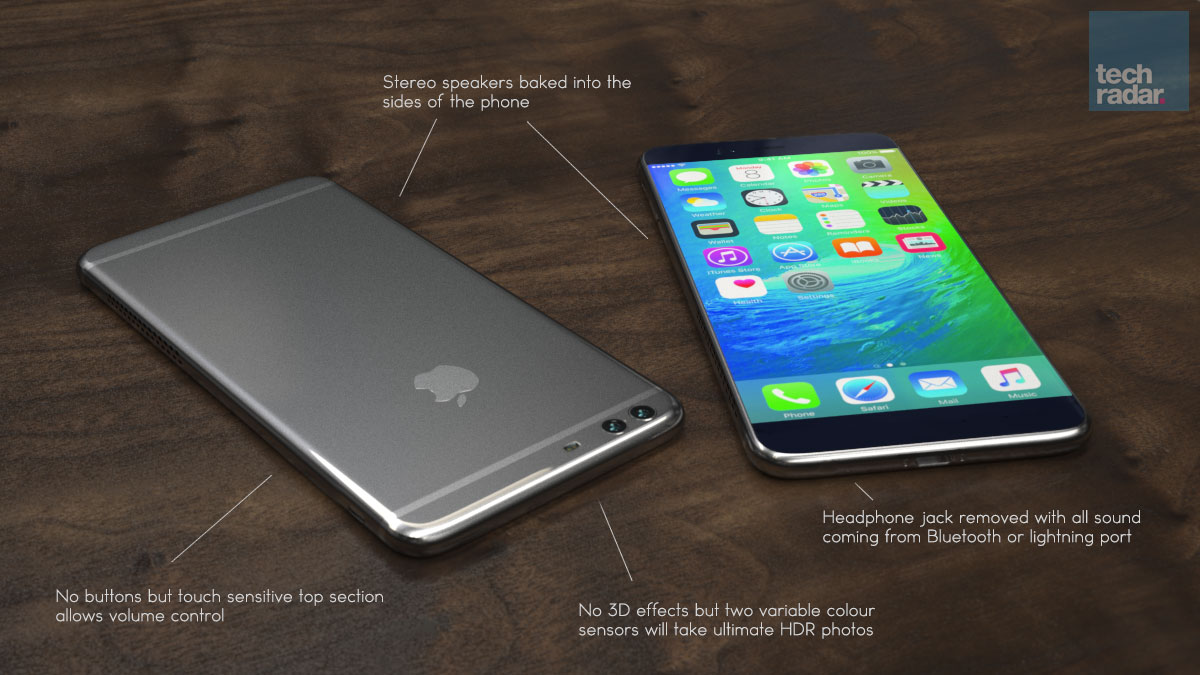Apple's iPhone 7 could use Intel chips
But it's not what you think

You likely won't see Intel's infamous "Intel Inside" sticker plastered on the back of the iPhone 7, but that doesn't mean that future Apple smartphones won't contain Intel technology.
Citing people close to the matter, VentureBeat reported that Intel has as many as 1,000 engineers working on a modem that could be used in a future iPhone. The Intel 7360 LTE modem, which supports 4G LTE and 3G CDMA networks, could arrive as early as the iPhone 7, according to the publication.
Intel CEO Brian Krzanich said that the 7360 modem will start shipping to manufacturers by the end of this year and will show up in products ready for consumers in 2016, which could result in Apple getting its iPhone 7 modems from both Qualcomm and Intel. Currently, all of the iPhone modems are sourced from Qualcomm.
An all-for-one future
Although Apple won't be using Intel's mobile-based Atom processor on an iPhone any time in the near future, the goal would be to integrate the modem directly onto Apple's A-series processor in a system-on-a-chip (SoC) design. Integrating the modem, processor and graphics together onto a single silicon chip could lead to better battery life, improved performance and faster speeds for iPhone owners.
For Apple, this could also lead to thinner iPhone designs. Integrating components also means that less space is required for each individual component, so Apple could shed thickness or pack in a bigger battery on its next iPhone model.
Intel's role in the equation would be manufacturing these chips. Apple would design the rumored A-series processor, license Intel's intellectual property to integrate the modem directly into the processor design and then send the design to Intel's fabrication labs to be manufactured.
The Intel advantage
The A9 chips inside Apple's flagship iPhone 6S and iPhone 6S Plus smartphones are manufactured by TSMC and Samsung. Even though the A9 chip is a 14nm processor, Apple's partners create the interface with a 20nm design, which isn't as efficient or advanced as Intel's 14nm design.
Sign up to the TechRadar Pro newsletter to get all the top news, opinion, features and guidance your business needs to succeed!
In addition to a 14nm design, Intel has begun work for an even smaller 10nm design, which could be ready in as little as two years. This puts Intel's timeline ready for production for an A-series processor for the iPhone 8, with the iPhone 7S likely succeeding next year's iPhone 7.
Intel's history with Apple
Infineon, the wireless company that Intel acquired, had supplied 3G modems for Apple's iPhone until 2011. Apple has since switched to Qualcomm as its modem supplier.
Since the acquisition, Apple has hired a number of top Infineon executives, including Intel CTO Bernd Adler. VentureBeat cites conflicting sources as to the reason for Apple's hire. Some speculate that Apple hired Infineon engineers to help collaborate with Intel, while others suggest that Apple wants to design its modem in-house, similar to how it currently designs the A-series processors.
In addition to mobile, Intel's processors are also found on Apple's OS X products. Apple transitioned from a PowerPC architecture to Intel's x86 processor in 2006. Now, Intel processors span all of Apple's desktops and laptops, including the Mac Pro, Mac Mini, iMac, MacBook, MacBook Air and MacBook Pro lines.
- Read our iPhone 6S Plus review